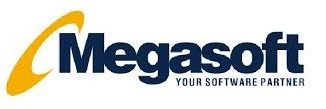
Most organisations measure performance after the fact—annual reviews, bonus letters and exit interviews. HR analytics flips that script by turning day‑to‑day signals into timely guidance, so managers can coach, teams can improve and employees can grow. In 2025, the combination of people data, modern modelling and thoughtful change management is transforming performance from a backward‑looking ritual into a forward‑looking system.
What HR Analytics Brings to Performance Management
Performance has multiple dimensions: capability, motivation and opportunity. Analytics clarifies which lever to pull in a given context. When dashboards align outcomes, behaviours and leading indicators, leaders stop guessing and start experimenting. The payoff is higher productivity, fairer recognition and better career pathways.
Data Foundations: From HRIS to a People Data Lake
Reliable insights begin with reliable data. HRIS tables, learning‑management systems, collaboration platforms and project trackers feed a governed lakehouse with point‑in‑time snapshots. Data contracts, lineage and quality tests ensure that metrics calculated today will still be reproducible in six months. Privacy controls minimise sensitive fields and log every access, simplifying audits.
Metrics That Matter: From Activity to Outcomes
Activity is easy to count; value is harder. Prioritise measures that connect work to business goals—cycle time, defect escape rate, customer satisfaction and successful hand‑offs between teams. Complement them with leading indicators such as coaching frequency, skills growth and cross‑functional collaboration. Keep definitions short, public and versioned so everyone argues about the work, not the numbers.
Designing Fair Goals and Reviews
Set objectives that balance personal and team contributions. Use calibration sessions to reduce rating drift across departments, and anchor discussions in evidence—examples of shipped improvements, peer feedback and measurable outcomes. Transparent rules about promotion gateways and reward thresholds reduce ambiguity and focus energy on mastery rather than politics.
Predictive and Prescriptive Models for Performance
Descriptive metrics tell you where you are; predictive models suggest where you could go. Gradient‑boosted trees can flag rising risk of missed targets by combining workload spikes, dependency bottlenecks and skills mismatches. Prescriptive layers recommend actions—pair programming, task re‑prioritisation, or targeted training—and A/B tests evaluate whether the advice works for different cohorts. Explainability techniques such as SHAP improve trust by showing which signals move the needle for each recommendation.
Manager Enablement: Turning Insights into Action
Analytics only helps when managers know how to act on it. Short, just‑in‑time nudges outperform long policy manuals: “Your one‑to‑one cadence slipped; book two sessions next week” works better than a quarterly memo. Playbooks translate model outputs into humane interventions—recognise effort publicly, redistribute work, or schedule a skills check‑in—so managers feel supported rather than judged.
Upskilling Pathways for People Analytics Teams
Building this capability requires cross‑disciplinary fluency. Analysts need statistics, SQL and experiment design; HR partners need data literacy and change communication; engineers need governance and observability. Many teams formalise learning through a mentored business analysis course, where participants practise scoping stakeholder questions, shaping measurable hypotheses and turning findings into executive‑ready narratives without drowning in jargon.
Fairness, Privacy and Compliance by Design
Performance analytics touches sensitive territory. Remove protected attributes from features, test for disparate impact and document mitigation steps. Aggregate collaboration data to team‑level where possible, and allow employees to see and correct their own records. Under GDPR and India’s DPDP Act, model cards and retention schedules are not paperwork—they are operational safeguards that protect both people and programmes.
Tooling and Architecture for Scale
A durable stack pairs a warehouse or lakehouse with a transformation layer, a feature store and a model registry. Orchestration coordinates weekly retraining and monthly review packs. Observability combines system metrics with data‑quality checks so on‑call staff can spot drift quickly. Embed role‑based access control and data‑masking policies at the source to avoid fragile downstream patches.
Experiments That Improve How Work Gets Done
Treat new practices as experiments. Pilot a revised hand‑off template in two squads and measure defect rates; test a different PR‑review policy and track cycle time; try micro‑learning bursts and observe skill‑assessment scores. Publish results internally, including where changes did not help, so teams learn faster together.
Stakeholder Communication That Builds Trust
Leaders and employees must understand the “why”. Replace opaque dashboards with concise storyboards that link observations to decisions. Use short videos or walkthroughs to explain how a metric is built, what it excludes and how to interpret confidence intervals. Trust grows when people feel informed, not surveilled.
Role Clarity and Career Mobility
Clear role expectations reduce friction. Define ladders that describe impact at each level with examples tied to your metrics. Offer rotational programmes so engineers can try analytics, and analysts can shadow operations. Mid‑career professionals seeking to move into people‑analytics leadership often benefit from a project‑centred business analyst course, which deepens stakeholder discovery, requirement mapping and value articulation.
Avoiding Common Pitfalls
Do not confuse presence with productivity—calendar hours and message counts are weak proxies. Avoid single‑number performance scores that collapse nuance and invite gaming. Keep models modest; a well‑tuned baseline with clear thresholds often beats a complex black box no one trusts. Build appeal routes so employees can contest data errors without fear.
Change Management and Adoption
Introduce analytics in phases. Start with volunteer teams, publish results and iterate on feedback. Provide manager clinics where people can rehearse tough conversations and share scripts that worked. Celebrate behaviours that data reveals as beneficial—mentoring time, documentation sprints and inclusive brainstorming—not just headline numbers.
Measuring the Programme Itself
The analytics function should hold itself to account. Track leading indicators such as time‑to‑insight, stakeholder satisfaction and adoption rates of recommended practices. Report contribution to outcomes—productivity lift, reduced rework and improved retention—paired with cost and risk metrics. Sunset reports that no longer inform decisions; simplicity is a feature.
Technology and Vendor Choices Without Hype
Pick tools that fit your constraints. A lightweight set—SQL, Python and a visualisation layer—may beat an expensive suite if your use cases are focused. Insist on open formats for portability, and pilot before signing multi‑year contracts. Ensure vendors support audit needs and can demonstrate bias testing in their models.
Future Trends to Watch in 2025
Compact language models will draft review summaries and suggest next‑step coaching prompts while keeping humans in the loop. Privacy‑preserving analytics—synthetic data, differential privacy and federated learning—will expand what can be learned from sensitive sources without exposing individuals. Expect tighter integration between learning platforms and performance systems so skill growth and delivered outcomes finally move in step.
Conclusion
Optimising performance with HR analytics is not about surveillance; it is about equipping people to do their best work with clarity and care. Organisations that pair disciplined data practice with humane management will see faster delivery, fairer recognition and stronger retention. For teams building these muscles, a structured business analysis course can accelerate the shift from ad‑hoc reports to credible, decision‑ready insight.
Professionals who want to sharpen stakeholder discovery and influence can also benefit from a focused business analyst course, turning analytics into actions that people recognise, trust and adopt.
Business Name: ExcelR- Data Science, Data Analytics, Business Analyst Course Training Mumbai
Address: Unit no. 302, 03rd Floor, Ashok Premises, Old Nagardas Rd, Nicolas Wadi Rd, Mogra Village, Gundavali Gaothan, Andheri E, Mumbai, Maharashtra 400069, Phone: 09108238354, Email: enquiry@excelr.com.

Leave a Reply
You must be logged in to post a comment.